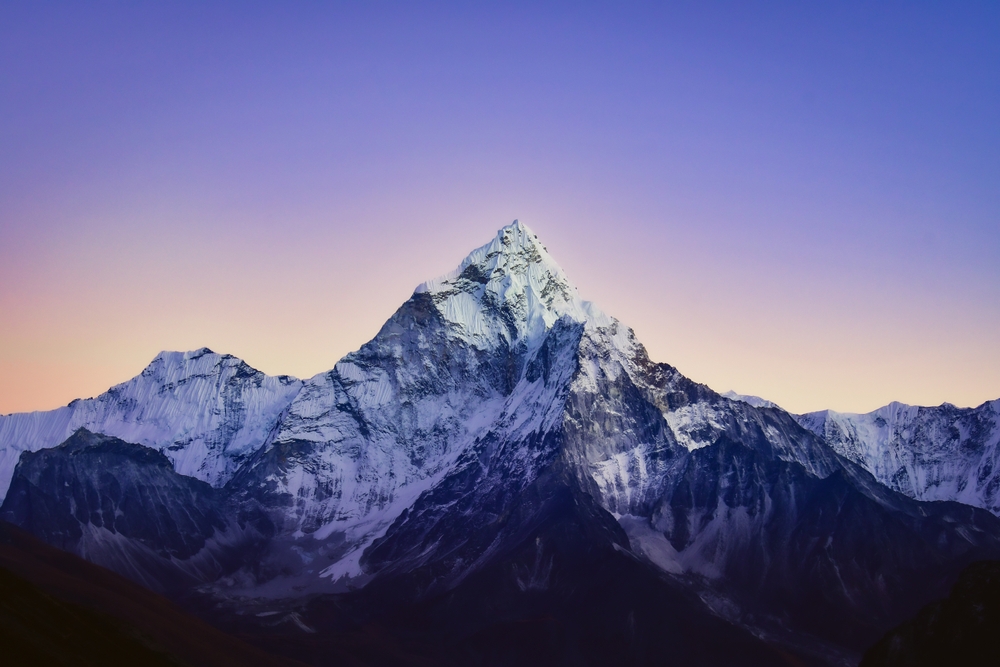Majestic Mount Everest: What to Know About the World’s Tallest Mountain
Posted on Categories Discover Magazine

Mount Everest is the tallest mountain in the world. Impressive as that is, there is plenty more to know about Everest. Think about this for a minute: The top of the mountain is covered with limestone that, a few hundred million years ago, was on the floor of the ocean.
“It’s a remarkable example of how dynamic the planet is over geologic time,” says Sean Gallen, an Earth scientist at Colorado State University who studies, among other things, how mountains are formed.
And then there’s the pure grandeur of Everest. Baker Perry is a climatologist who studies how climate change affects the mountain and everything downstream. This is how he describes being atop Mount Everest: “It’s the edge of the world. You feel like you can reach out and touch the stars.” It’s no wonder there is much to learn about this majestic mountain.
Mount Everest Continues to Reach New Heights
Known as Chomolungma in Tibetan and Sagarmāthā in Nepali, Everest is located in the Himalayas mountain range between Nepal and Tibet. From the summit, you can see Tibet, India, and Nepal.
The British Royal Geographic Society named Mount Everest in 1865 in honor of Sir George Everest, surveyor general of India from 1830 to 1843. However, Everest didn’t want the peak named after him. He preferred to use local names for geographical features. But his successor as surveyor general was not aware of the local names for the mountain, so Everest it became, and that name is still widely used outside Nepal and Tibet. Chomolungma means “Mother Goddess of the World” in Tibetan. The Nepali word Sagarmāthā means “Peak of Heaven,” which is certainly descriptive of the mountain.
Whatever you call it, Everest is awfully tall: 8,849 meters (29,032 feet) according to the most recent measurements. That’s roughly 20 times as tall as the Empire State Building.
And it’s still growing! Actually the entire Himalaya range is growing, although occasionally it shrinks a bit then goes back up, says Gallen. Again, that’s because the planet is dynamic. The Himalaya range was formed millions of years ago, when tectonic plates from Eurasia and India crashed (very slowly) into each other, pushing Earth’s crust upward. Even now those plates are still moving against one another, creating changes in the height of the mountains, including Everest.
Read More: The Expedition to Heaven on Earth
The Human Toll of Climbing Everest
In May 1953, Edmund Hillary and Tenzing Norgay became the first people to reach the highest point on Earth. Many since have died trying. More than 300 climbers have perished while trying to climb Mount Everest. Most of those bodies are still up there, frozen in the ice, causing one writer to refer to the mountain as the world’s highest cemetery.
Despite the risks, or maybe because of them, a peak like Everest is irresistible to elite climbers. Climbing Everest is both technically challenging and incredibly dangerous. Because of extremely low oxygen and formidable weather, the area above 8,000 meters (26,000 feet) elevation has been dubbed the “death zone.”
Read More: These 6 Animals Live at the Highest Altitudes on the Planet
The Impact of Everest’s Extreme Climate
The winds in the death zone can be ferocious. Perry says the highest wind speed his team has measured is 150 miles per hour — before the wind sensor failed. Temperatures can reach minus 60 degrees Celsius (minus 76 degrees Fahrenheit) with wind-chill temperatures as low as minus 83 degrees Celsius (minus 117.4 Fahrenheit).
Climate change is having an alarming impact on Mount Everest and the communities surrounding it. A 2022 study by Perry and others found that on Everest’s highest glacier, ice that took 2,000 years to accumulate melted completely in the last three decades.
Paradoxically, this puts locals at risk of both flooding and water shortages. As glaciers disappear, the lakes they feed dry up. At the same time, increasing rain (instead of snow) at higher elevations increases the likelihood of avalanches and rock slides. When these rocks fall into glacier lakes, it causes glacial outburst floods that can devastate downstream communities, explains Perry. This is likely the cause of a 2024 devastating flood in Thame, a village in Khumbu, Nepal.
Mount Everest towers above the planet, seemingly aloof and independent of the activities of those of us closer to sea level. But what humans do affects the mountain, and what the mountain does affects those living below.
Read More: Climbers Turned Mount Everest Into A Garbage Dump, But Solutions Exist
Article Sources
Our writers at Discovermagazine.com use peer-reviewed studies and high-quality sources for our articles, and our editors review for scientific accuracy and editorial standards. Review the sources used below for this article:
Avery Hurt is a freelance science journalist. In addition to writing for Discover, she writes regularly for a variety of outlets, both print and online, including National Geographic, Science News Explores, Medscape, and WebMD. She’s the author of Bullet With Your Name on It: What You Will Probably Die From and What You Can Do About It, Clerisy Press 2007, as well as several books for young readers. Avery got her start in journalism while attending university, writing for the school newspaper and editing the student non-fiction magazine. Though she writes about all areas of science, she is particularly interested in neuroscience, the science of consciousness, and AI–interests she developed while earning a degree in philosophy.